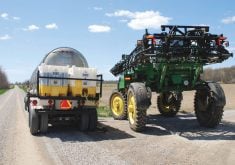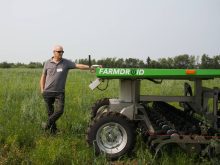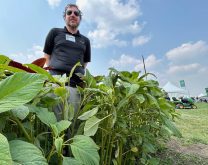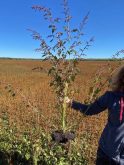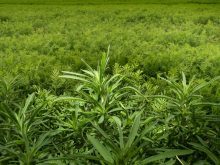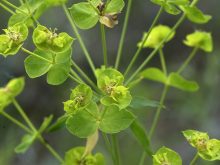REGINA — Shaun Sharpe is on a mission to keep palmer amaranth and waterhemp out of Saskatchewan.
The two weeds have been making their way north and west from the United States and have been found in Manitoba. They resemble other pigweeds but are dangerous because of herbicide resistance.
In some areas of the United States, there is six- and 10-way stacking of resistance. As well, these weeds are able to metabolize herbicides they might not have been exposed to previously.
Read Also

U.S. bill could keep out Canadian truckers
The Protecting America’s Roads Act, which was tabled in the U.S. House of Representatives at the beginning of October, would “rid the country of illegal immigrant commercial truck drivers and ineligible foreign nationals.”
Sharpe expects they could be in Saskatchewan by 2030-35 and may be in the province already.
The federal research scientist based in Saskatoon is starting a multi-pronged four-year study looking at cultural suppression without having to grow the weeds themselves, identifying whether it is already present and focusing on extension.
He is planting grain amaranth in place of its weedier cousins to study how different crops and seeding rates can suppress it. He will take pictures and compare how the different crops compete.
The idea is to understand what an escape would look like with the large amaranth weeds.
“If using an increased rate for seeding is going to be an effective suppression strategy, which it probably will be, it’s good to document that,” Sharpe said.
The project will have $4,000 available each year to test samples of the pigweeds that farmers find on their land. Labs can test genetics from a leaf or a seedling that farmers send to Sharpe.
“We will screen them to have a look at them and to make sure that they are the pig weeds we think they might be. Then if we are concerned, we’ll send them off for testing and get that information back to the growers to try to remove any economic barriers to identifying what this is,” he said.
Part of Sharpe’s team is examining online images of the two weeds to validate them. The pictures will have geo-referenced data that will lead to the development of a niche map, which indicates where a species is likely to be found.
Then, the team will project that model on to Manitoba and Saskatchewan, and areas identified as having high compatibility with the niche map will be targeted for extension work with weed specialists, organizations and growers.
The image validation process will also include evaluation of publicly available weed identification or plant ID apps.
“I don’t want to reinvent the wheel here. I just want to use something that the growers can pick up really quickly,” Sharpe said.
There are species of pig weed that are pervasive, although not native, including red root pig weed, green pigweed and spiny pigweed. These are all monoecious species, which means they have male and female flowers on the same plant.
The invasive species are dioecious; the plants are either male or female.
Sharpe said it is challenging to identify the plants when they are small.

The first clue to which type a plant it is will occur when it flowers and looks different than what one might expect. The weeds have long, flowing seed heads, hairless stems and a petiole, or the stalk of a leaf, that is longer than the leaf itself. Anyone who spots a pigweed like this should contact him or a provincial weed specialist so they can get a good look at it.
The weeds are adapted to disturbance areas such as margins, sloughs and approaches, and while animals and birds can distribute them, humans are the best at it. The weeds can be transported on equipment, and he urged anyone who purchases equipment from the United States to have it power washed before it crosses the border.
Other ways to keep weed seeds from moving with equipment is to harvest the dirtiest fields last so that infestations aren’t carried elsewhere.
Grain screenings used as feed are another method of spread. Sharpe said the weeds can be found in various seed sources. In Minnesota, a large native seed restoration had to be eradicated because of these weeds.
Sharpe intends to have some amaranth plots at Ag in Motion in July to draw farmers into the conversation about palmer amaranth and waterhemp.






